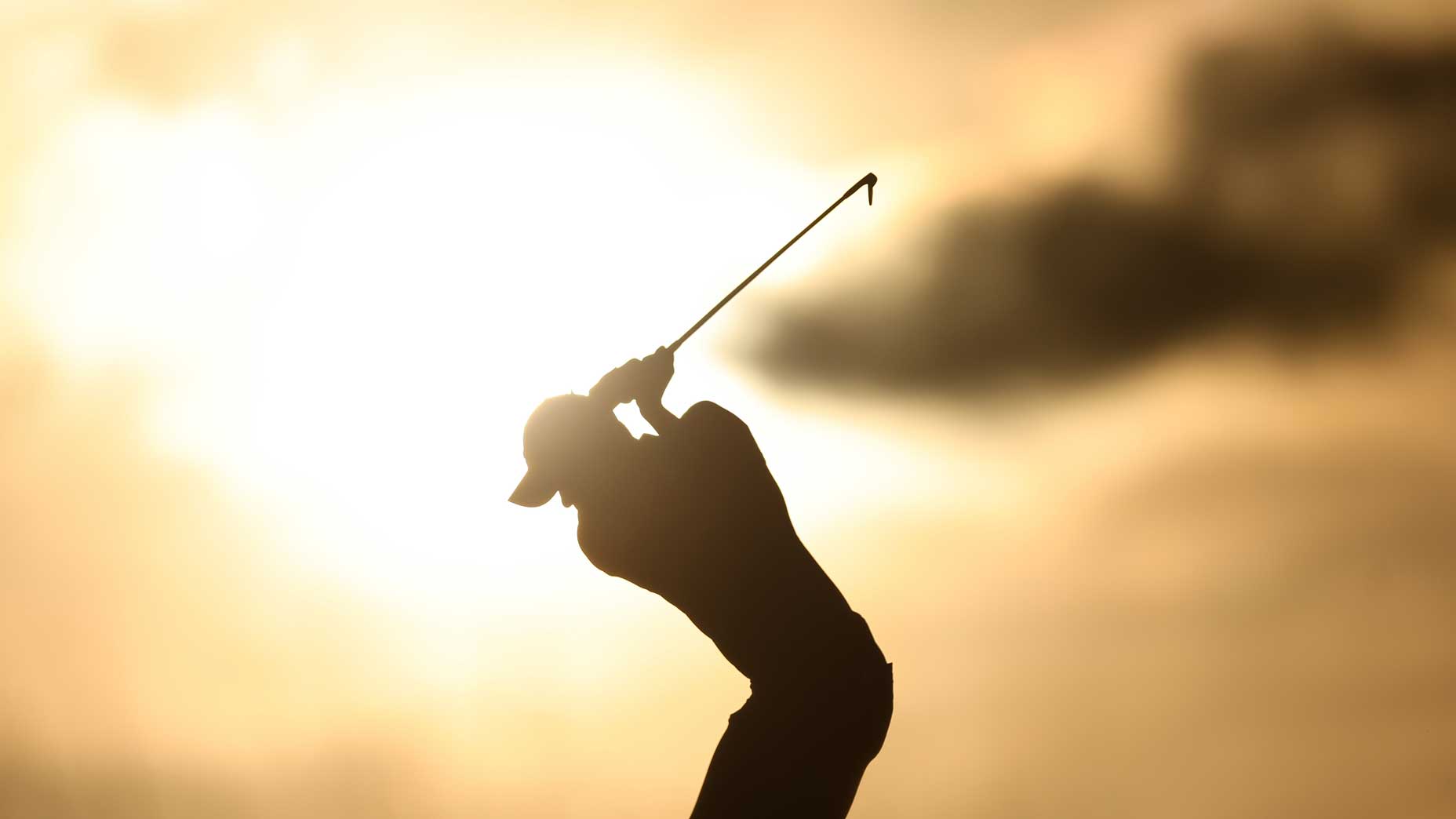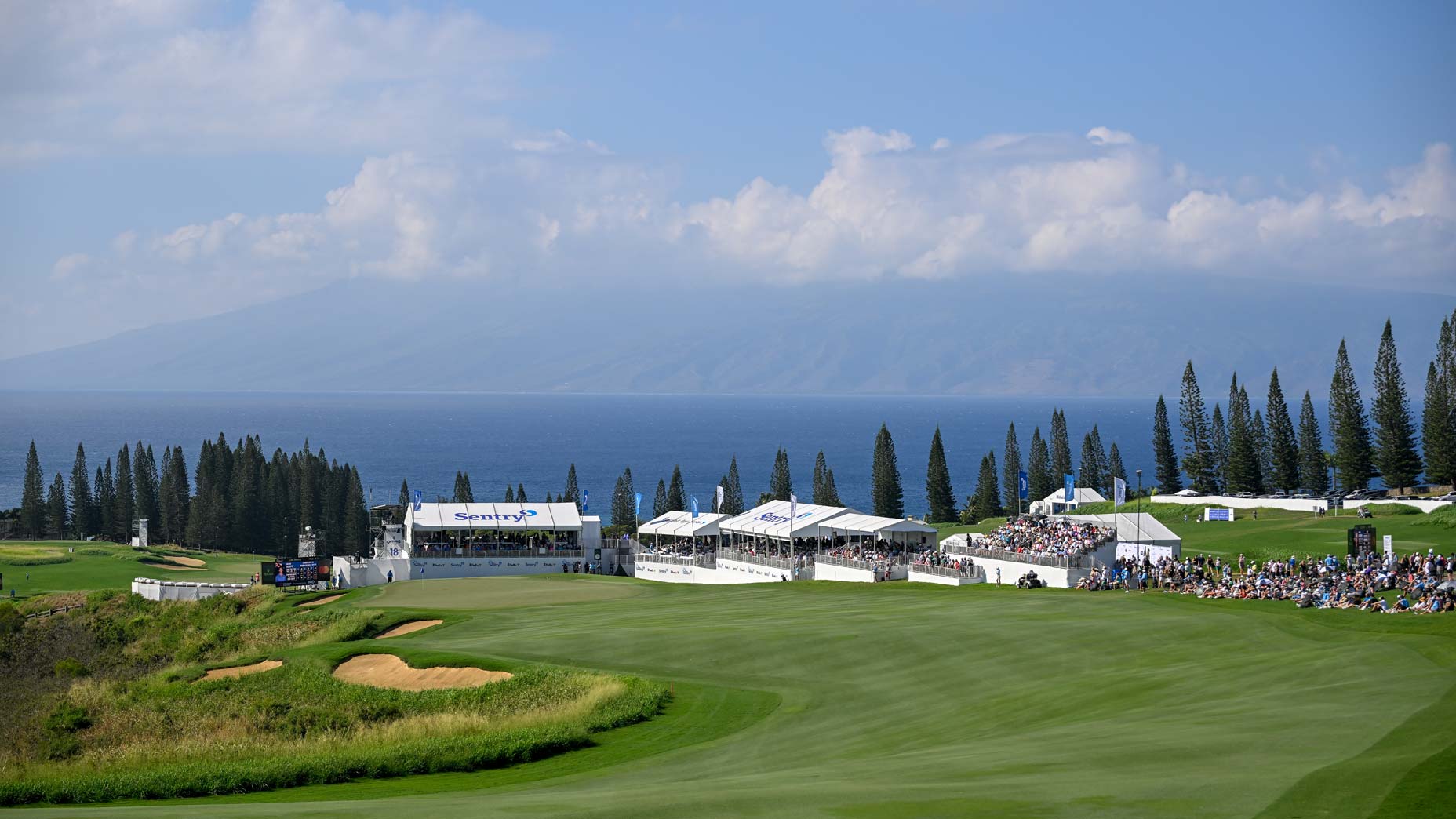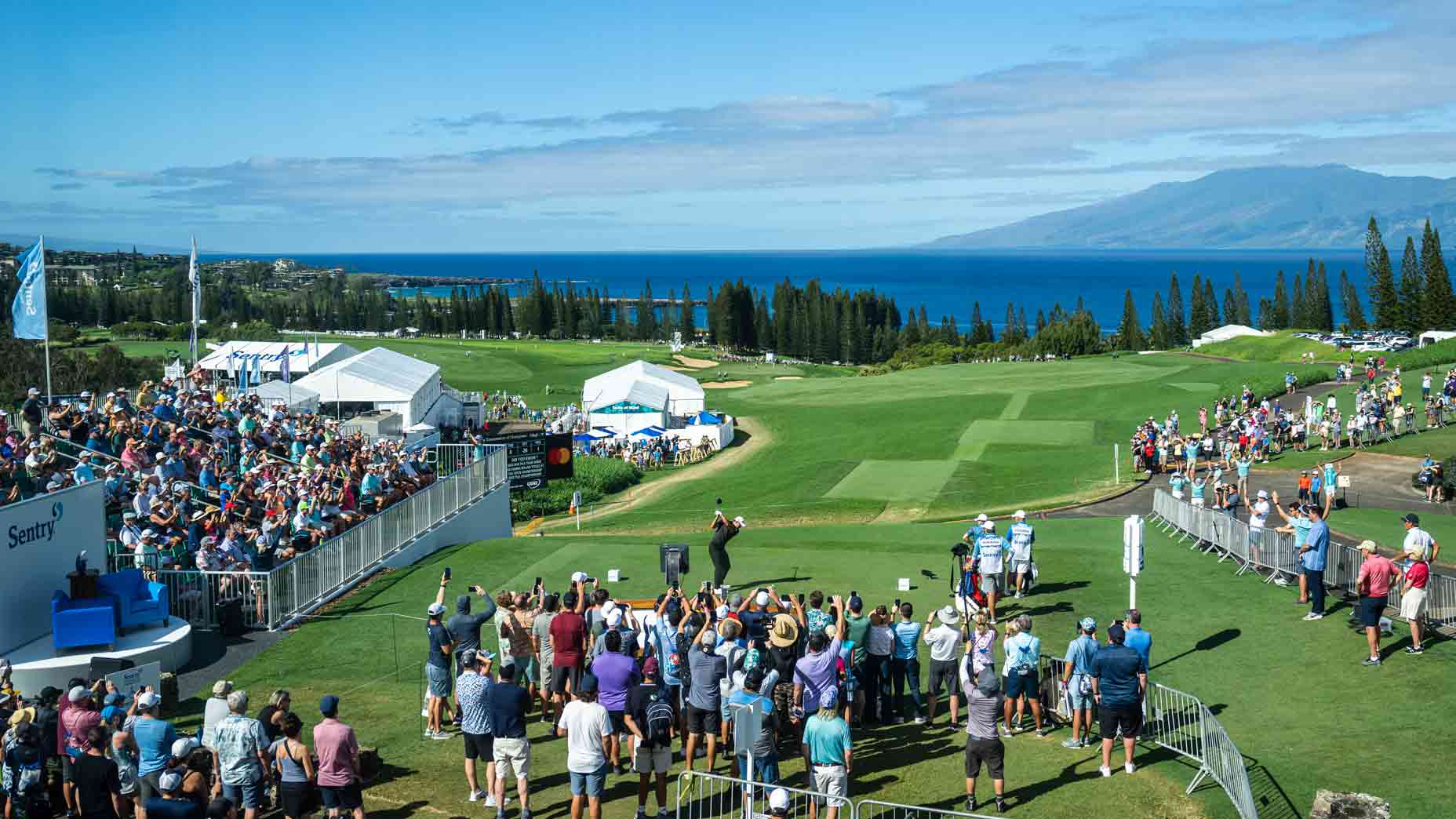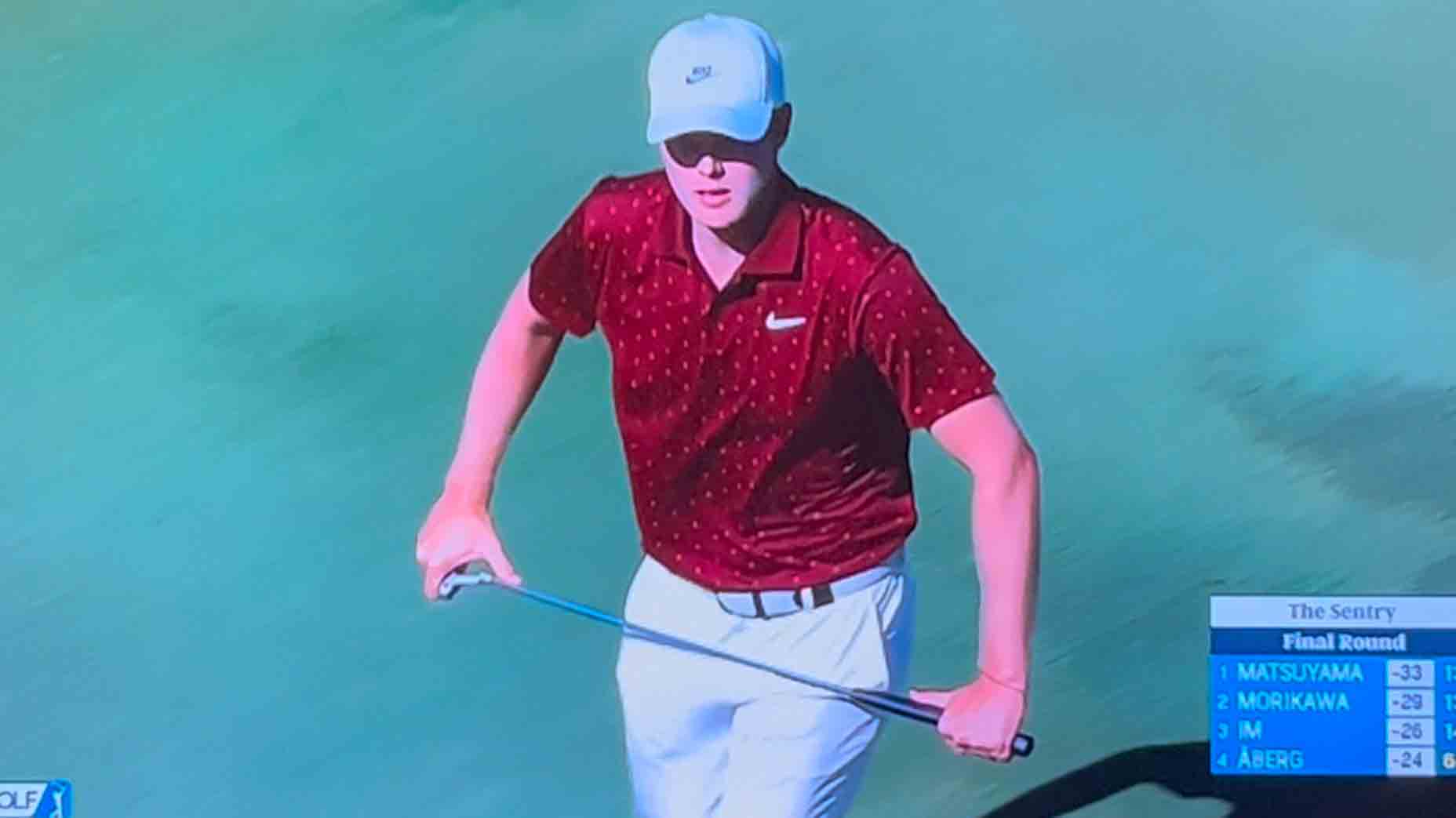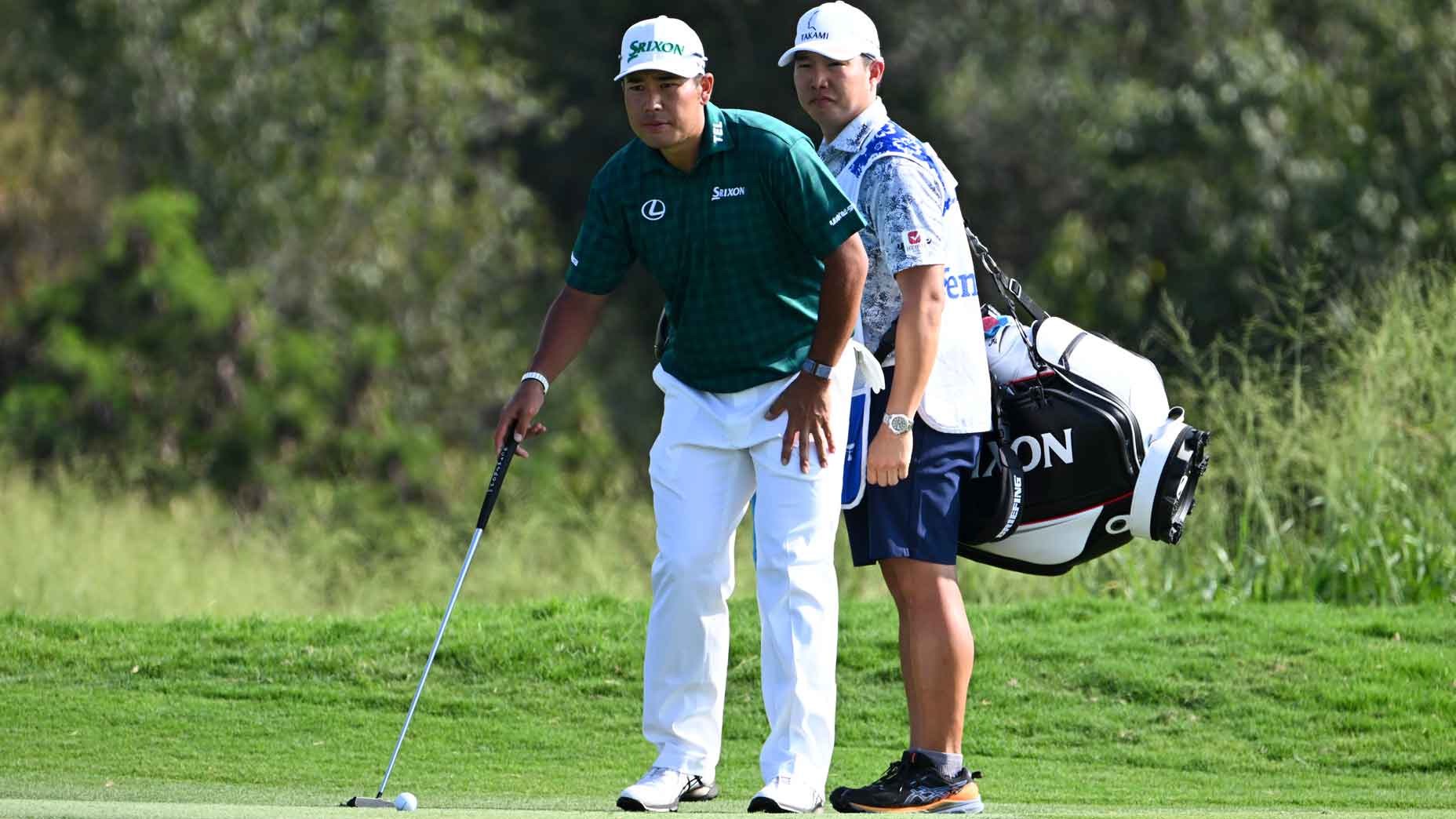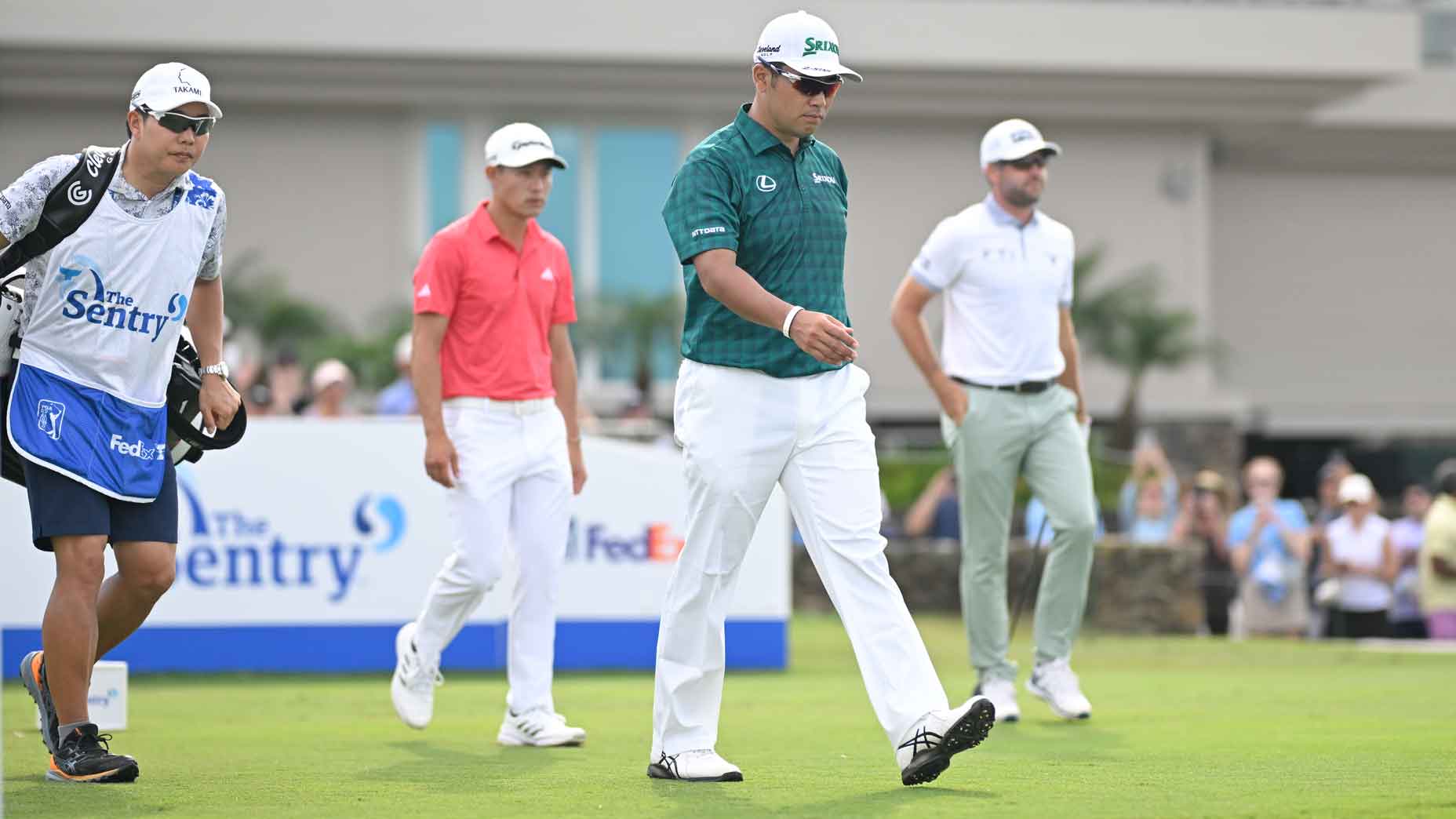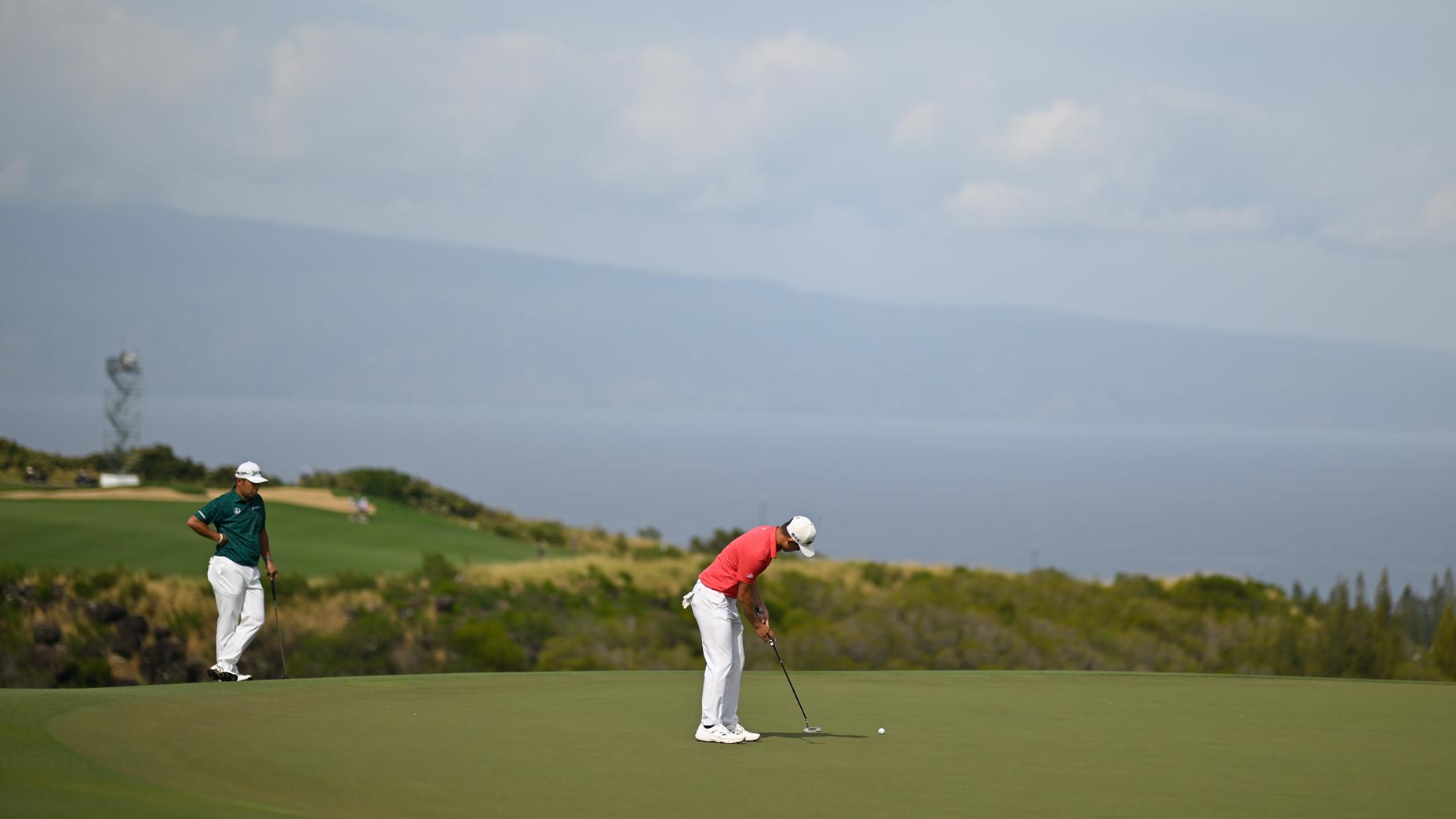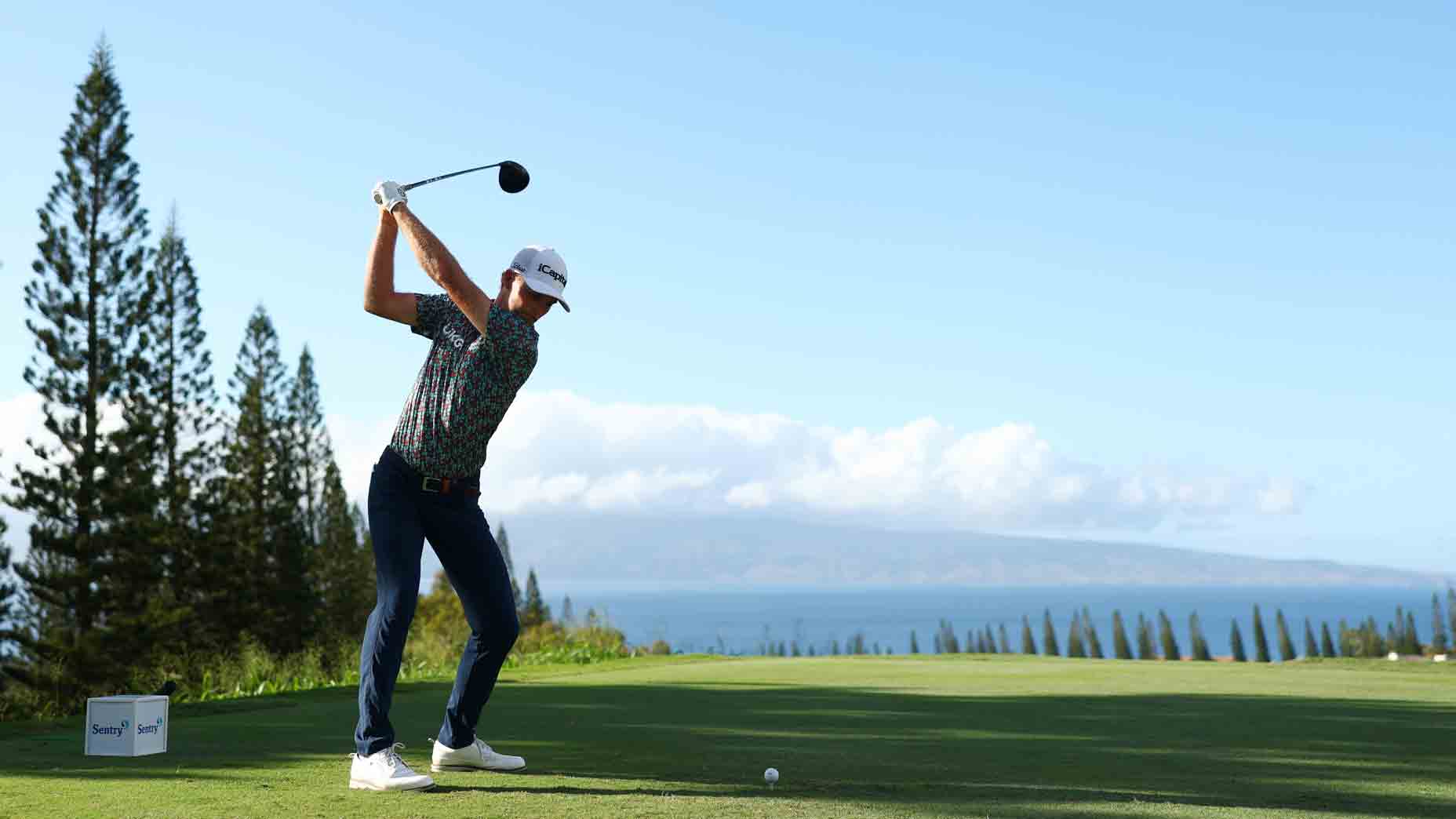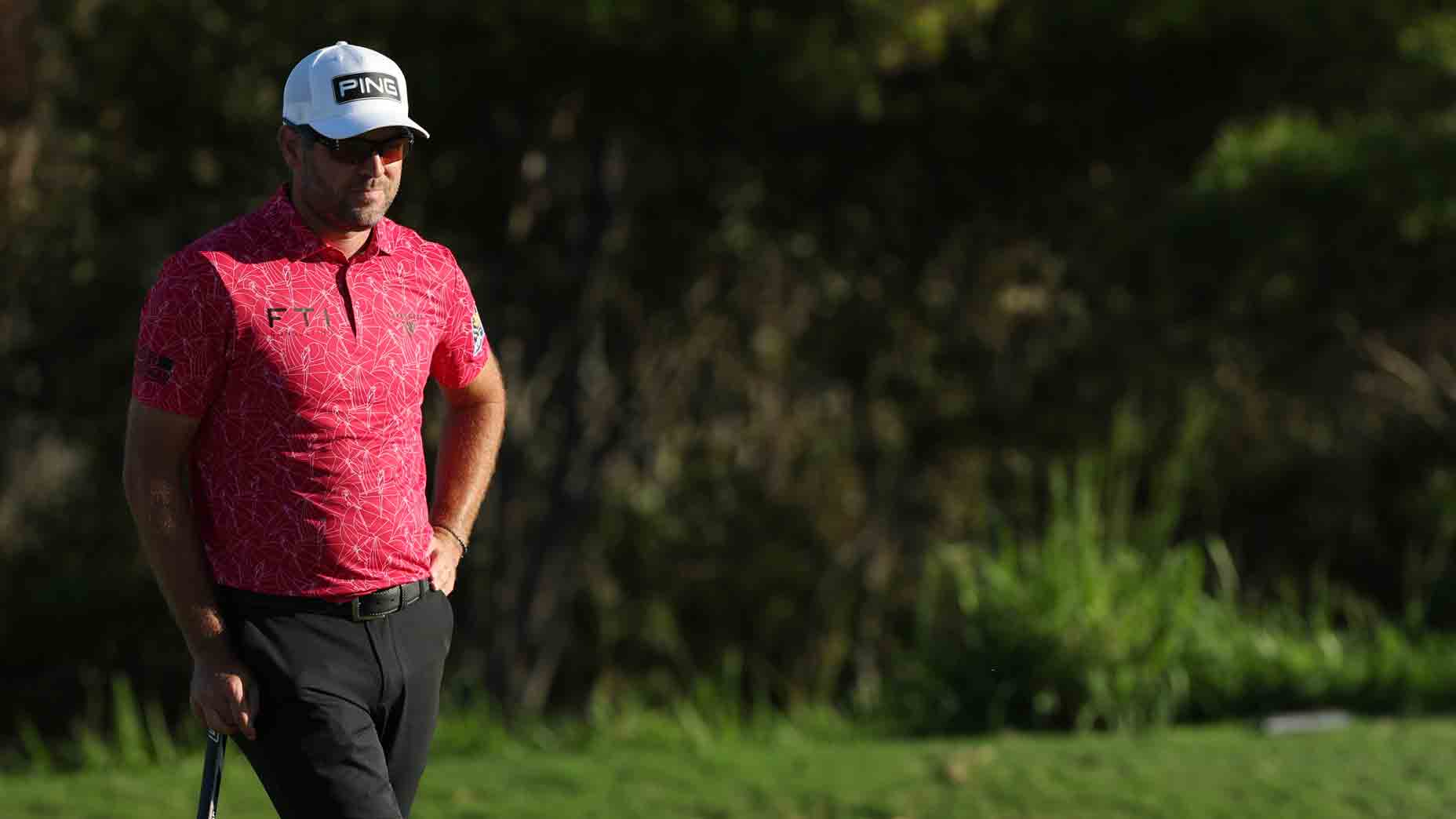Collin Morikawa began the first week of the new PGA Tour season at a farm.
It was Monday of Sentry Week and Morikawa had made his way to Hua Momona Farms alongside a new friend: Chef Zach Laidlaw. Morikawa and his wife Kat joined the farm crew in their efforts to donate boxes of produce to local families in need. Laidlaw understands their struggle — he lost his home last summer, too. He’s living out of a suitcase, about all he’s got left. And he’s trying to help.
They prepped CSA (community-supported agriculture) boxes. Microgreens, pineapples, tomatoes, eggplant. Hua Momona does a weekly donation of CSA boxes, three dozen or so, sending fresh food straight to displaced Lahaina families.
In his pre-tournament press conference Morikawa announced his donations for the week — $2,000 for each birdie and $4,000 for each eagle — and explained why he felt compelled to help out.
Morikawa has personal ties to the community, he explained; his grandparents had a restaurant in Lahaina several decades ago and the building that housed that restaurant (long since sold from the Morikawas) burned in the fire.
“I think we all saw it firsthand, all the players driving in this week,” Morikawa said. “You could see all the devastation, what had happened to everyone’s houses and the businesses, and I just want to give back to a community that goes back in my family history.”
It only felt right, he said, that he offer a lending hand.

“I never lived here, but my family lived here, my grandparents lived here, my aunts and my uncles, my cousins all grew up here, and to know that you have that tie to that family, it’s heartbreaking.”
Thursday he hit the tournament’s opening tee shot, which he said he’ll never forget, a high driver soaring into the deep blue ocean backdrop before landing on the fairway below.
By Sunday afternoon Morikawa hadn’t won the tournament but he had racked up enough birdies for a T5 finish and a $52,000 donation — one that’ll be matched by his sponsor, Adidas.
“This week was going to mean the world to me, no matter how I played,” Morikawa said post-round, excited about his finishing flurry, seven birdies in 10 holes, to crack the $50,000 barrier. “Just the support, you could feel it on the island, you could feel it out here on the golf course the entire week.”
Last year was my first trip to Kapalua, and I distinctly remember tournament organizers mulling how to change the name from “Sentry Tournament of Champions” given the field now included non-winners, too. Those were simpler times. But the name they ended up with, The Sentry, served not only as terrific sponsor integration but also as an appropriate suggestion of comfort. We’ll stand guard.
The Sentry takes place at the Plantation Course at Kapalua, part of a sprawling resort enclave that feels distinctly like paradise. But it’s also just minutes from the site of disaster. Just a few minutes down the road is Lahaina, a town that served as the area’s cultural hub and home to many locals, including a significant percentage of Kapalua staff. In August, much of Lahaina burned to the ground in a matter of a hours — the former Morikawa restaurant and the home of Chef Zach included — killing over 100 people and destroying the homes of thousands more. Some 6,000 remain displaced, living in repurposed hotel rooms or crowded rentals or in tents on the beach.
Tournament week, the message from locals seemed to be a simple one, then: Don’t forget about us.
That was the message of Kawika Castro, a firefighter who appeared on Golf Channel and recounted his harrowing hours stuck inside the inferno; he and his team were saved by the bravery of a colleague who rallied into the fire to get them out.
The Sentry was a welcome beginning to the year, bringing business to town and attention and donations and relief efforts as well as the announcement of a $500 million recovery plan from state and federal funding to provide housing going forward.
If you watched the tournament this weekend you likely heard about relief efforts and you likely heard encouragement to please come visit. After all, there’s consensus among local officials that the return of tourism to the area is essential to its economic recovery. That also presents understandable challenges, not just because displaced people are staying in hotels but because it’s hard to imagine what it would be like to serve mai tais and rum punches to luxury hotel guests when you yourself lost your home. Recovery efforts seem frustratingly slow, too, some combination of bureaucracy, inaction and the challenges of getting supplies to one of the most remote island chains in the world. But the holidays represented a return to something like normalcy at Kapalua, with the Ritz-Carlton buzzing with hundreds upon hundreds of happy tourists and happy golfers and happy tourist-golfers, each of them hoping for a brighter 2024.
Morikawa was hardly the only pro to lend a hand.
Xander Schauffele’s relief efforts began within a week of the fire; last August he pledged to donate up to $100,000 as part of a match program with Hawaiian Host Group. Schauffele spent the first few years of his life in Hawaii and describes the islands as dear to him and expressed his hope that the tournament would raise awareness and money. He held a junior clinic on Monday, too, providing something else: joy.
“I think in that moment they sort of forgot what happened and what was happening and were able to sort of laugh and smile. So if I could provide a little bit of relief in that way, that was awesome for me,” he said.

Tony Finau held his annual family golf tournament on Kapalua’s Bay Course on Tuesday afternoon and live-streamed the entire thing, raising money through the tournament and by encouraging donations.
Patrick Cantlay launched a first-responder fundraiser awarding four-year scholarships to the children of first responders in a program that will begin this fall. Rickie Fowler collaborated with Puma on an “L” hat for Lahaina, with proceeds going to Maui United Way. Tom Hoge made a birdie pledge, too, offering up $1,000 per birdie and $5,000 per eagle for the week, his 23 birdies and one eagle adding up to a $28,000 donation. The tournament featured several ways to donate, from Aloha Friday to a red-shirt school-funding initiative on Saturday.
And Sentry has been involved in the recovery process from the beginning. The tournament sponsor, which prides itself on building close community ties from its headquarters in Stevens Point, Wisc. to Maui, has donated multiple millions and has pledged to stand by the tournament and its host throughout.
“Maui is like family to us — a part of our ohana, a Sentry community,” CEO Pete McPartland told the Stevens Point Journal last fall. “And we’ll stand by Maui throughout the recovery and rebuilding process.”
There was something else that Morikawa said that stuck with me. Where he grew up in La Cañada, Calif., there were fires, he said. And where the Tour plays in Napa, at Silverado, there were fires.
“That was devastating as well,” he said.
The implication was twofold. One, bad stuff happens everywhere. Two, the PGA Tour travels a lot of places. It’s impossible to tackle every problem everywhere. But it’s encouraging to think that this tournament could positively impact this community, not just this week but going forward through the years, helping the world not forget about the people of Lahaina.
Here’s hoping the message sticks around a little longer.
